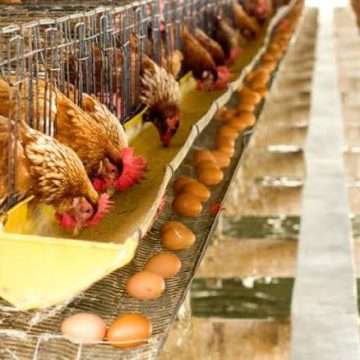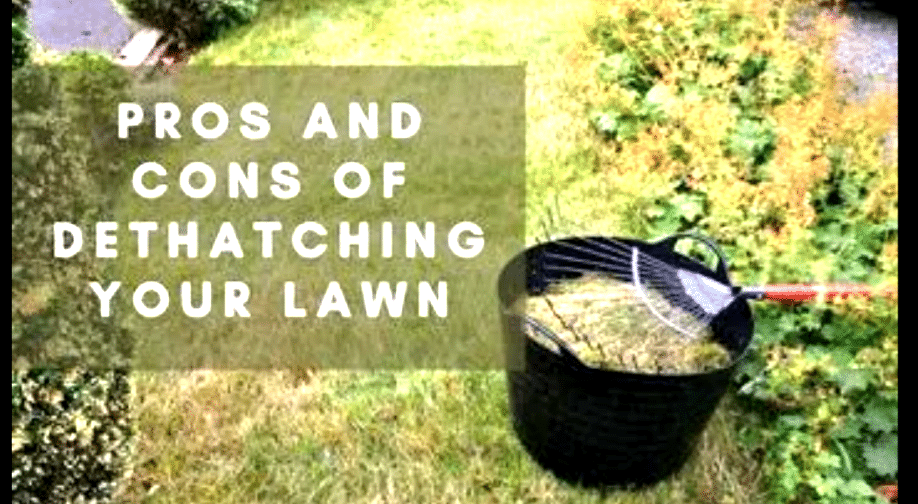Dethatching a Lawn
Dethatching is the removal of built-up dead grasses in your lawn to allow water and air to get to the root of the live grasses.
You can get more lawn dethatching tips, the importance of dethatching your lawn, when to do it, and how to dethatch your lawn properly so you don’t kill it.
What are the Advantages of Dethatching your Lawn?
It is a good idea to dethatch your lawn so the layer of dead grass and other organic materials don’t lead to compaction and disturb the healthy growth of live grasses.
Here are some of the benefits of dethatching your lawn.
It Improves Water penetration into the soil
Dethatching your lawn helps to improve water penetration into the soil, which is essential for healthy root growth and overall lawn health.
Plants need water to digest the nutrients in the soil with the support of soil microbes.
Water is also important for nutrient circulation, and other processes in plants.
Dethatching Promotes better nutrient absorption
Dethatching allows nutrients to reach the roots of the grass more easily, promoting better nutrient absorption and healthy growth.
Removing the dead layers of grasses can also improve photosynthesis in plants because light would be able to reach new plants better.
It improves Aeration
Compaction of lawn can block air from getting into the soil properly.
Dethatching your lawn is aerating your field at the same time.
Allowing air to get into the soil can also promote the decomposition of dead matter in the soil, and increase nutrient supplies to the growing plants.
Dethatching can Reduce the risk of Disease on your Field
Dead grasses and other organic matter can create a breeding space for pests and diseases.
Therefore, dethatching eliminates this breeding space, and reduces the risk of disease and pest infestations in your lawn.
It makes your Lawn looks Good and Neat
Dethatching can improve the appearance of your lawn by promoting healthy growth and creating a more uniform surface.
A green environment promotes sound health and enhances the sense of good feelings.
You can achieve this if you dethatch your lawn when necessary, fertilize it, and mow it later when it grows to keep it clean and fine.
Detaching Increases resilience to drought
A dethatched lawn is more resilient to drought and other environmental stresses, as it allows water and nutrients to reach the roots more easily.
Overall, dethatching can help to promote a healthy, attractive lawn that is more resistant to pests, disease, and environmental stresses.
Are there Disadvantages of Dethatching your Lawn?
While dethatching can have many benefits for a lawn, there are also some potential disadvantages to consider.
It Can damage healthy grass
Dethatching can be a relatively aggressive process that can damage healthy grass if not done correctly.
Over-dethatching or using the wrong tools can result in excessive removal of live grass, creating bare spots and an uneven lawn.
Dethatching takes time
Dethatching can be a time-consuming process, especially if you’re not a gardener, and particularly for larger lawns.
Dethatching may be costly
Dethatching may require renting specialized equipment, which can be expensive or spending many hours manually raking and removing the thatch.
If you don’t want to do it yourself, you would have to outsource a professional garden management agency to dethatch your lawn for you.
It May not be necessary
While some lawns may benefit from dethatching, not all lawns require it.
If the thatch layer is not excessively thick, dethatching may not be necessary and could be an unnecessary expense and effort.
Dethatching your lawn may create additional maintenance requirements
Dethatching can create additional maintenance requirements, such as extra watering and fertilizing, to promote healthy regrowth of the lawn.
Removing layers of dead grass can be messy
Dethatching can create a large amount of debris, which can be messy and difficult to dispose of.
Conclusion
Overall, while dethatching can provide many benefits for a lawn, it is important to carefully weigh the potential disadvantages before deciding whether to undertake this process.
It is also important to ensure that it is done correctly to avoid damaging healthy grass and creating additional maintenance requirements.








